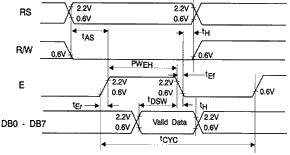
Write Operation
Below is a summary of hardware design considerations and precautions:
POWER:
HARDWARE:
MOUNTING
These precautions apply equally to modules from all makers - not just Densitron. When these rules are followed an extraordinary service life can be achieved. Violation of these guidelines can cause problems ranging from erratic operation to catastrophic display failure.
POWER SUPPLY PRECAUTIONS:
OPERATING PRECAUTIONS:
MECHANICAL/ENVIRONMENTAL PRECAUTIONS:
Sympton:
A) No display after initialization and data sent.
Probable cause:
B) Displays randomly or unreliably.
Probable cause:
Check b), c). d), e), & g) above.
C) Only 1 line will display on a 2 line module.
Probable cause:
Display initialized as 1 line display. Send proper initialization codes.
C) Missing rows or columns of dots
Probable cause:
Display has been mounted so that torque or pressure is applied to PPC and/or bexel.
Unmount and recheck.

Write Operation
| ITEM | SYM | MIN | MAX | UNIT |
|---|---|---|---|---|
| Enable Cycle Time | tcycE | 1000 | nS | |
| Enable Pulse Width | PW EH | 450 | nS | |
| Enable Rise/Fall Time | tEr, tEf | 25 | nS | |
| Address Set-up Time | tAS | 140 | nS | |
| Address Hold Time | tAH | 10 | nS | |
| Data Start-up Time | tDSW | 195 | nS | |
| Data Hold Time | tDHR | 10 | nS |
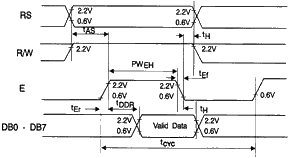
Read Operation
| ITEM | SYM | MIN | MAX | UNIT |
|---|---|---|---|---|
| Enable Cycle Time | tcyc E | 1000 | nS | |
| Enable Pulse Width | PW E | 450 | nS | |
| Enable Rise/Fall Time | tEr, tEf | 25 | nS | |
| Address Set-up Time | tAS | 140 | nS | |
| Address Hold Time | tAH | 10 | nS | |
| Data Delay Time | tDSW | 320 | nS | |
| Data Hold Time | tDHR | 10 | nS |
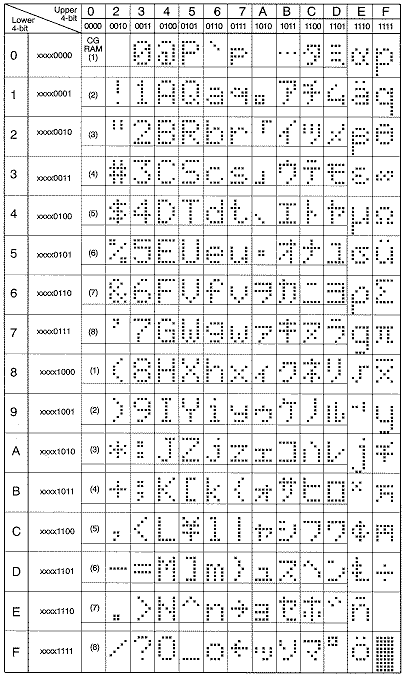
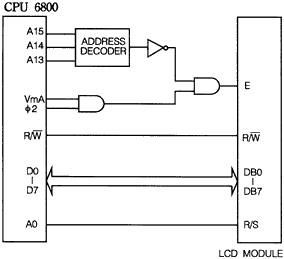
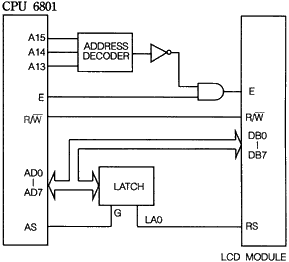
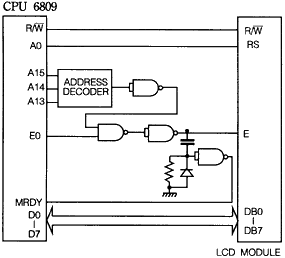
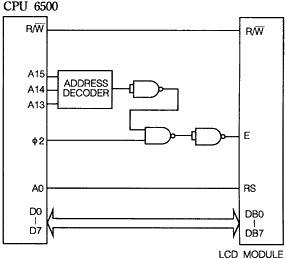
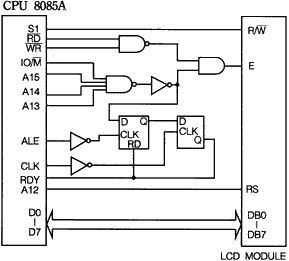
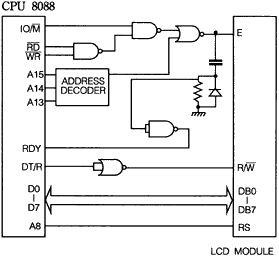
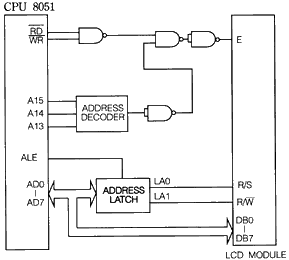
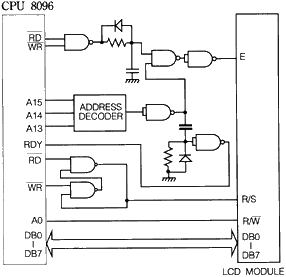
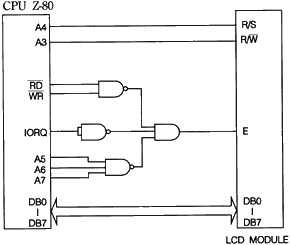
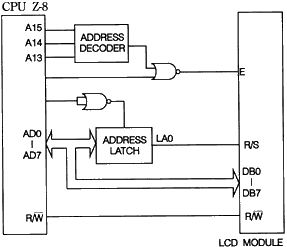
| TYPE | P/N CODE | DESCRIPTION | DIRECT SUNLIGHT | OFFICE LIGHT | SUBDUED LIGHT | VERY LOW LIGHT | COMMENTS |
|---|---|---|---|---|---|---|---|
| Reflective Positive | A | Dark Characters on a Light Gray or Yellow Background | Excellent | Very Good | Poor | Unusable | Cannot be backlit |
| Transflective Positive | B | Dark Characters on a Light Gray or Yellow Background | Excellent (Lamp Off) | Very Good (Lamp On) | Very Good (Lamp On) | Very Good (Lamp On) | Best Choice for all around use |
| Transmissive Negative | E | Lighted Characters on a Dark Background | Poor (Lamp On) | Good (Lamp On) | Very Good (Lamp On) | Excellent (Lamp On) | Backlight must always be on |
| Transmissive Positive * | F | Dark Characters on a Light Gray or Yellow Background | Good (Lamp Off) | Very Good (Lamp On) | Excellent (Lamp On) | Excellent (Lamp On) | Lighted background is brighter than "B" type |
* Limited Availability